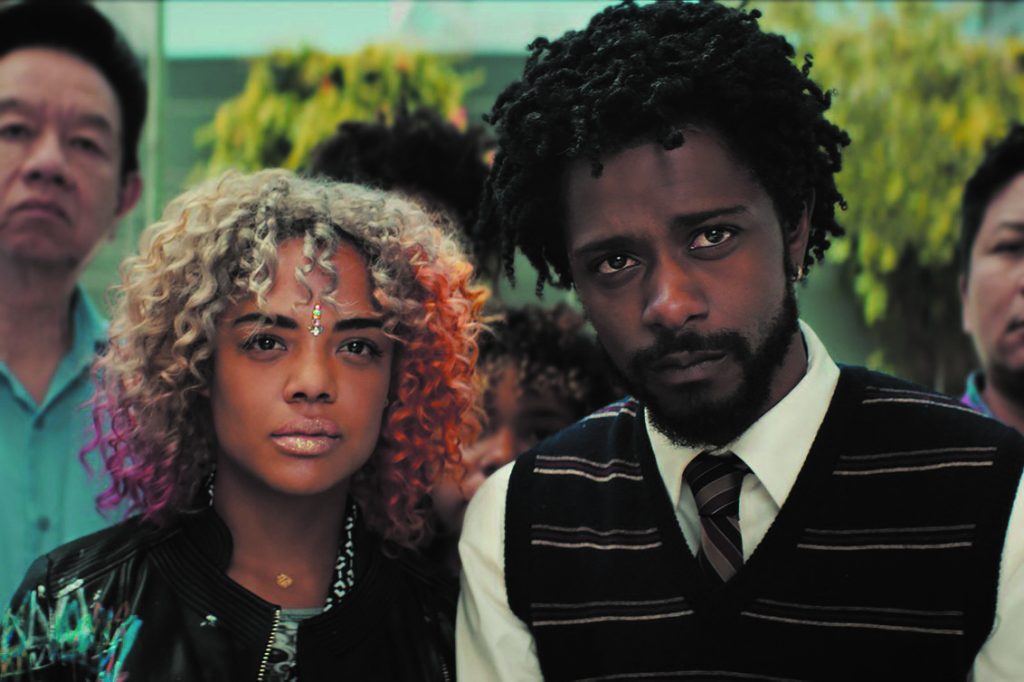
Institutions of power are being seen in a different narrative in film, with a specific focus on policing and capitalism versus the people. This critical lens of the capitalist state and its guard dogs displays sentiment felt for generations, especially within the community of people of color. In particular, this summer’s releases boasted “Blindspotting,” directed by Carlos Lopez Estrada and “Sorry to Bother You,” directed by Boots Riley, both of which challenge the often complacent view of police and capitalism present in Hollywood cinema.
It isn’t a new trend, however. For a majority of its existence, American cinema has touted police officers as stoic action figures, certain of every shot and capable in any situation. This began to change around the 1950s with the popularity of film noir. Noir introduced dark, morally gray narratives with common tropes of seedy detectives caught in corrupt webs of lies and deceit. The portrayal of corruption on the silver screen began to steadily grow until the later part of the century, especially from the ‘70s onward. Films depicting corrupt cops such as “Serpico” (1973) — which came a decade after the civil rights movement, or “Cop Land” (1997) — which premiered only a few years after the notorious Rodney King case — began to succeed at the box office. You can clearly see that the long-term effects of unchecked corruption had begun to taint how we view police and how we portray them in media.
However, it is important to note that these films represent a smaller fraction of cinema, albeit a growing fraction, than the violently naive representation of the police Hollywood has largely produced. Another aspect of these films is that most of the corruption we do end up seeing on screen usually tends to deal between police and an outside corrupting force, like working for the mafia or taking bribes from politicians. It is rarer to see portrayals of the police attacking citizens out of their own volition. This ultimately brings us to the most important note of all: What happens when films not only begin to show the police versus the people, but the same people who are being affected are also now the ones telling the story? And what happens when these people don’t stop there and come for the capitalist institutions the police protect?
You can find this line of questioning in current films such as “Blindspotting” and “Sorry to Bother You.” “Blindspotting” takes a closer look at the police presence in an ex-convict’s life as he tries to reintegrate himself into a recently gentrified Oakland. “Sorry to Bother You” follows Cassius Green’s attempts to make it to the top of the telemarketing company ladder and the many pitfalls and cruelties that come with capitalism. The two films focus on a different side of the coin of police and capitalism, but still manage to offer nuanced rhetoric and stark imagery on both of these issues. “Sorry to Bother You” in particular presents radical views of anti-capitalism that are even rarer to find in American cinema. Other than the occasional scene of surface-level monotony at a cubicle or factory, it is very rare to see a complete upheaval of institutions that keep millions in wage slavery as depicted here. Hollywood loves the police, but nothing is more American than consumerism.
More often than not, art is an expression of emotion at a moment in time, and we must consider the contexts of that time. People have the ability to affect media — to will what gets created onto the screen — and media, in turn, affects us back and changes us as a society; we get caught in a feedback loop. But oftentimes we forget — who gets to tell their story and affect the media? Not every group has had the same privilege to decide what gets told. These films signify a paradigm shift in how we view police and the oppressive power they use to keep the cogs of capitalism in check. This is because these stories are being told by the same black and brown bodies being affected by these intersecting forces. Film is finally catching up to what people of color have felt for decades, and what white people have known all along.


